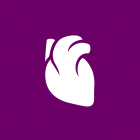Interventional Cardiology
MIOT Institute of Cardiac Care
Overview
Interventional Cardiology, the preferred mode of heart care across the world today, uses minimally invasive procedures for the diagnosis and treatment of all cardiac conditions.
The MIOT Centre for Interventional Cardiology offer patients the latest and complete range of minimally-invasive treatments to intervene – prevent, diagnose and correct various conditions of the heart, at all stages. Our expert and experienced Interventional Cardiologists, each of them a super-specialist in a specific area, have trained in leading international centres and are available 24×7. They work together in MIOT Hospital’s state-of-the-art Digital Cath Lab-cum-theatres, and use advanced interventional techniques that are offered in very few centres in India, to ensure accurate and effective care.
Patient-friendly Treatments
This could involve use of the latest stents and devices to protect against further damage to the heart or replace invasive procedures with the latest drugs. Often, diagnosis and treatment is done at the same time. It reduces overall cost of treatment, time for treatment and recovery, and above all trauma of the patient (as against heart surgery).
The Centre consistently delivers outcomes which match leading international centres and restore patients to their earlier lives with minimal pain and discomfort.
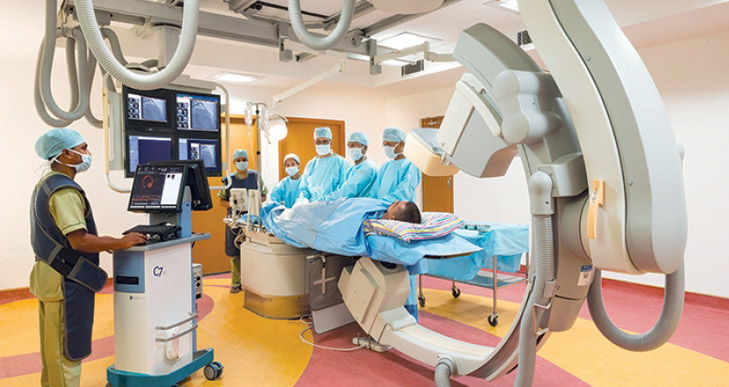
Interventional Cardiology – Demystified
Interventional Cardiology is a branch of heart care that involves catheter-based treatments for heart disease. Specialists access the heart using the radial (wrist) or femoral (groin) arteries, using thin tubes called catheters and real-time imaging, to diagnose and treat conditions that affect blood flow.
Interventional Cardiology procedures are minimally invasive and offer patients a number of benefits such as decreased pain, less risk of infection, smaller scars and shorter post procedure recovery time. In most instances, the procedures are performed under local anaesthesia and the patient remains awake while undergoing it. Some procedures are even performed on an outpatient basis, allowing patients to go home within hours of the procedure.
Most centres perform interventional procedures using the femoral artery; however, MIOT’s specialists access the heart through the radial artery in most cases, which reduces the risk of bleeding and is more comfortable for patients.
Heart Disease has many faces
The heart pumps 7200 litres of life-sustaining blood everyday – an amazing collaboration of muscles, valves, chambers, electrical circuits and blood vessels (arteries and veins). For most people, awareness of heart disease is limited to heart attack. However, heart disease can occur in every part of the heart: the blood vessels, valves, electrical system and heart muscle itself. It can take a toll on your entire system, impacting your quality of life. What most of us are not aware is that most heart diseases can be corrected at an early stage or prevented – with the help of an experienced Interventional Cardiologist, thus preventing heart disease from limiting what you can do in life.
Complete Suite of Interventional Cardiac Care
The MIOT Centre for Interventional Cardiology offers advanced treatments to treat all types of heart disease, with dedicated specialists for each functional area, namely Coronary Interventions, Electrophysiology & Devices (Arrhythmias), Structural Interventions & Percutaneous Valves, and Heart Failure & Cardiac Transplantation.
We also offer Interventional treatments for all cardiac conditions in children upto 14 years at the MIOT Center for Children’s Cardiac Care.
Coronary Interventions
Coronary interventions deal with conditions pertaining to the coronary arteries such as blocks and calcification. Narrowing or blockage of the coronary arteries due to cholesterol plaque or calcium deposits reduces blood flow to the heart, depriving it of oxygen and nutrients. This leads to damage of the heart muscle.
MIOT’s Interventional specialists access these blocked or hardened blood vessels through the wrist or groin, and then use sophisticated techniques to treat the blocks and restore blood flow.
Rotablation (Rotational Atherectomy), with a diamond-tipped drill that rotates 200,000 times a minute, is used to clear the most stubborn blocks and widen heavily calcified arteries. This highly intricate procedure demands a high degree of expertise and MIOT is one of very few centres in India to offer it. Our specialists also routinely perform Chronic Total Occlusion (CTO) Angioplasty, an intricate procedure that requires special training, to open arteries that have been totally blocked for an extended period of time.
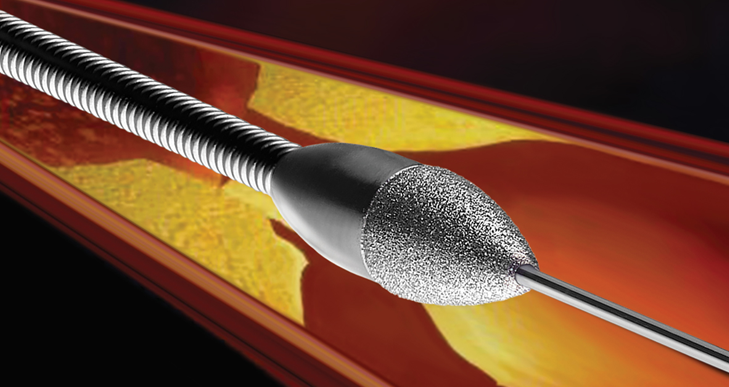
Advanced Stenting Capabilities
Our specialists also perform a range of advanced stenting procedures, including Bifurcation stenting – that is the placement of stents where an artery divides; stenting of the left main coronary artery – the largest artery in the heart, vein graft stenting and more.
MIOT offers the widest range of stents for safer and more effective treatment. Our specialists are experienced with drug coated stents which release medication to prevent a future block in the same area, and bio-absorbable stents which are absorbed by the body in time, and thereby eliminate the need for long-term blood thinning medication.
Valves & Structural Interventions
Heart Valves
The heart like any complex pump has valves within it. The heart has four valves (Figure 4). Valve dysfunction can occur leading to symptoms such as chest pain, shortness of breath, loss of consciousness, light headedness and fluid accumulation. Heart Valve dysfunction can occur due to abnormal defects from birth or acquired due to degeneration or rarely due infection of valves. Awareness and experience in treating heart valve conditions are vital for prompt recognition as treatment in a timely manner can completely cure patient’s symptoms and alter quality of life positively.
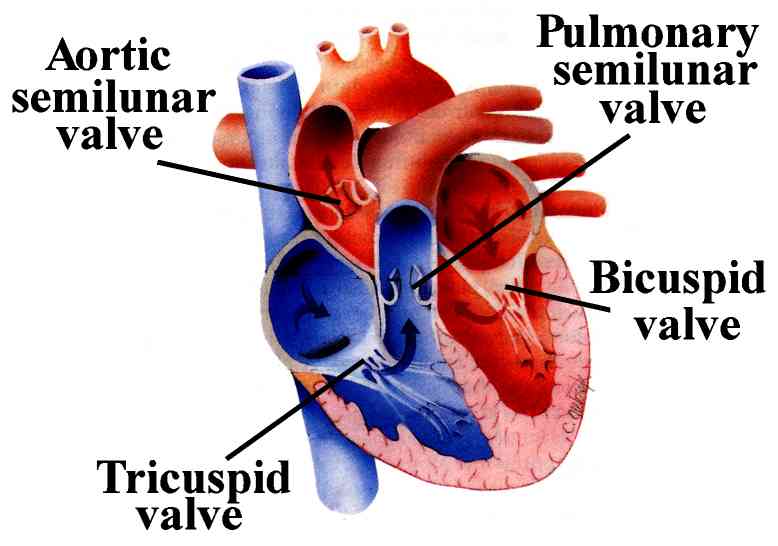
Figure 4: Heart Valves
The commonest valve abnormality due to age related degeneration is narrowing of the aortic valve. This is referred to as aortic stenosis (Figure: 5). The aortic valve is the main valve through which blood has to get out to the rest of the body. Narrowing of this valve leads to significant symptoms and the best definitive treatment for this condition is replacement of the aortic valve with a new artificial valve. This is done surgically through open heart surgery. This is very well established treatment for aortic stenosis.
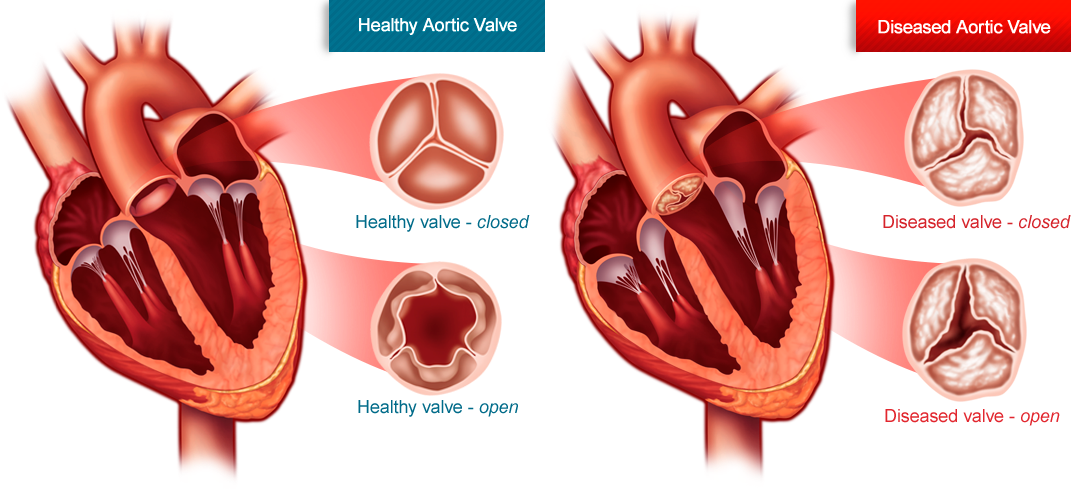
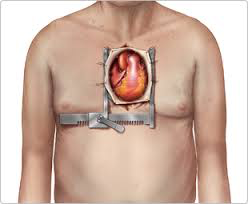
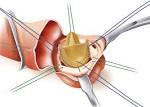
Figure 5: Aortic Stenosis and Surgical Treatment
However, not all patients can undergo open heart surgery. This is because they me be too old or frail or have other diseases including lung disease, kidney disease, etc that make them high risk for conventional surgical valve replacement. More recently valve replacement can be done without open heart surgery through a key-hole procedure from the groin. This is now a well-established treatment in the western world and is the first line treatment for many specific valve diseases. This allows most patients to have their valve replacement and walk out of hospital in 3-5 days’ time. The recovery for patients is therefore much quicker compared to open heart surgery. Patients do not have a scar on their chest. This technology has been available and widely used in Europe and America and few parts of Asia since 2004. These technologies, including the valves have been used for many years around the world and have been found to be similar in performance and longevity to surgically replaced valves. Technology has advanced so much that these procedures are now done under local anesthesia. However this treatment has not been available in India for routine use until recently. MIOT has been the first institution in India to start a dedicated Department for Percutaneous Valves to deliver such expertise since May 2015. This has been possible through deploying highly sophisticated infrastructure and international expertise available 24 hours a day dedicated for percutaneous valves. MIOT Hospital performed South India’s first Aortic Valve Replacement (TAVI) in a patient successfully through this dedicated department.
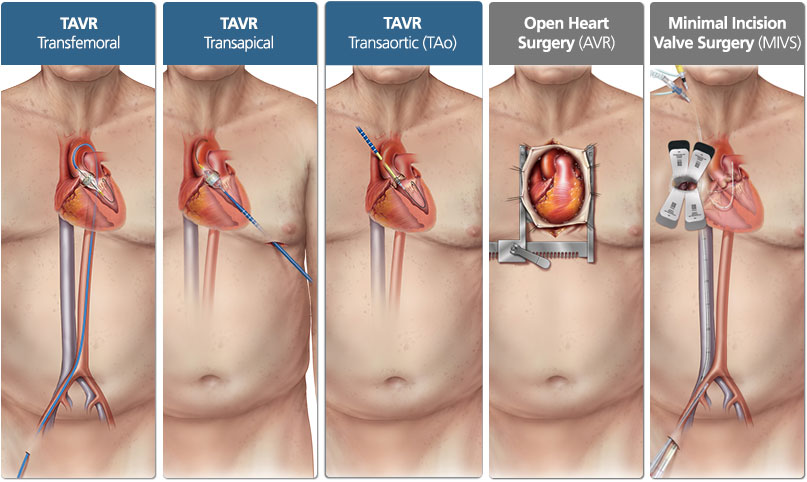
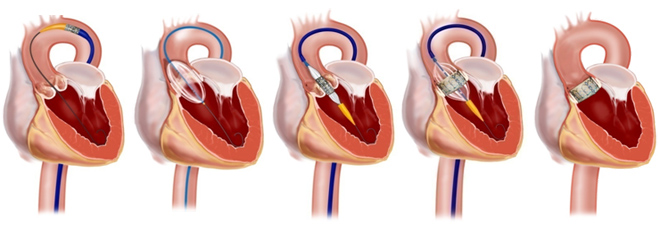
Figure 6: Transcatheter Aortic Valve Replacement (TAVI)
One of the commonest Valves affected in children is the Pulmonary Valve. This is often due to congenital heart disease whereby there is a defect in valve development when the child is in the mother’s womb. These children often have open heart surgery when they are young and the problem can be corrected completely with surgery. However, as the child grows, the heart grows too and therefore the heart surgery performed when they were a baby can no longer accommodate for their growth. They often require a second surgery as a teenager or young adult. This involves having another open heart surgery. But in recent years since 2003, around the world, patients can have their pulmonary valve replaced without open heart surgery. The procedure is called Percutaneous Pulmonary Valve Implantation (PPVI). Patient can have their valve replaced through a key-hole procedure from their legs and usually the patient can be discharged on the 2nd or 3rd day after the procedure. Again, the recovery is much quicker as it avoids open heart surgery and intensive care stay.
Some patients who have had previous valve replacement with a tissue valve (made from animal tissue) develop symptoms after about 10 years due to the valve malfunctioning. The only treatment used to be another open heart surgery to replace the diseased valve for a new heart valve. These are complex surgeries given their previous surgical histories. But now, they can have they valve replaced with key-hole procedure from the groin where a new valve is implanted within the malfunctioning valve taking over its function. This is a very effective treatment that allows swift recovery as it does not involve open heart surgery. Patients are discharged after 3 days in hospital. This is the first line treatment in many centers in Europe. MIOT hospital has become the pioneer in heart valve replacement without open heart surgery having started India’s first dedicated department to cater for any valve abnormality.
It is no longer possible to deliver a holistic cardiac care where any heart abnormality can be dealt with without public awareness and having available a full-fledged heart department with various sub-specialists able to deal with various individual areas of the heart. This is due to advancement in science which has been appreciated across the world by government bodies and regulatory authorities making many hospitals have all the individual sub-speciality departments within cardiology available. Patients deserve the best possible care no matter what heart abnormality they have and therefore a heart department with various specialists is vital to deliver such care. The heart of the matter is therefore holistic cardiac care!
Arrhythmia
Heart Electrics
The heart which is basically a pump by virtue of its functionality works spontaneously because it gets power (electricity) from its own source called the sinoatrial node. Electricity from its own source is carried to various parts of the heart through the heart’s own wiring systems (Figure 1). Like a mechanical pump, the heart’s normal functioning is only possible when the heart’s electrical system is functioning normally. In fact, the commonest mode/cause of death due to any heart abnormality is an abnormal electrical problem with in the heart. It can range from very slow heart electrical impulses or very fast heart electrical impulses or due to short circuiting between the wiring systems within the heart. This sub-speciality or super-speciality that deals with heart electrics is called Cardiac Electrophysiology
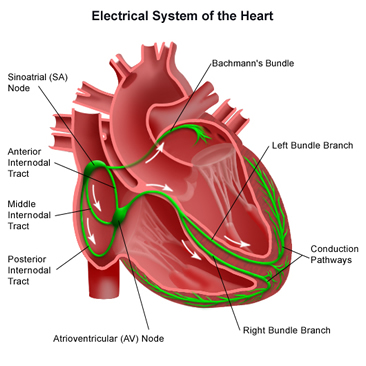
Figure 1: Heart’s normal electrical wiring system
Heart electrical problems can occur at any age. Some are acquired, whilst others are sporadic or inherited. The symptoms can range from chest pain, palpitations, shortness of breath, light headedness or loss of consciousness. Sometimes the first symptom is death which can be due to an inherited heart electrical problem. Although the patient has died, it is important to screen family members of such patients for any inherited heart electrical problems as treatment can save lives. Often the patient is managed for a heart attack which is unlikely to make any positive difference to the patient and can sometimes lead to harm. Heart electrical problems can occur in children of any age to adults’ up to any age. There are thousands of heart electrical conditions and each has its own treatment. But as stressed before, it is important to be assessed in a centre that has dedicated heart electrical departments. For children it is referred to as Paediatric Electrophysiology and for adults it is referred to as Adult Electrophysiology. There are only a few centers in the country where treatments for any heart electrical problem can be accomplished even though heart electrical problems are so common and can be dangerous. MIOT Hospitals is one of the very few in South India that has a dedicated Department for Adult Electrophysiology and a dedicated Department for Paediatric Electrophysiology.
With age, the heart electrical system can start failing and can lead to slow heart rates or the heart can stop temporarily for a few seconds due to damaged wiring system. Patients often present with black-outs. The treatment for such a condition is implantation of a pacemaker (Figure 2). This almost cures the patient symptoms completely. This is best done by a Cardiac Device Specialist or Electrophysiologist who has specific experience in heart electrics as implantation of pacemaker can come with multitude of problems if not done by experienced ‘heart electricians’.
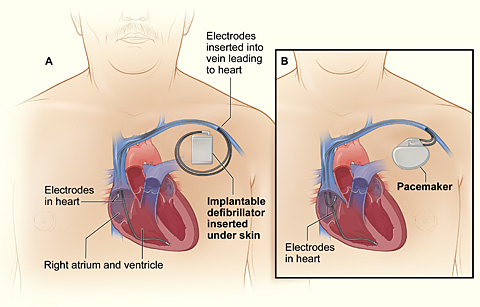
Figure 2: Pacemaker Implanted in a patient
Patients with poor heart pumping function due to heart attacks in the past or due to any abnormality of heart muscle are at risk of dangerous fast heart rhythms. The two common rhythms are referred to as Ventricular Fibrillation and Ventricular Tachycardia. The commonest cause of death in patients with poor heart function is one of these heart rhythms. Although several medications are used around the world, the only treatment to prevent sudden death in these patients is implantation of a defibrillator (ICD). Specialists can identify patients at risk through well established criteria before they encounter such lethal heart rhythms. Therefore implanting such devices in selected patients can be life saving. This is referred to as Primary Prevention. In addition, a few patients who have survived such lethal rhythms invariably benefit in having defibrillator devices implanted into them. An implantable defibrillator looks like a pacemaker but its functions are different.
Heart attacks and heart muscle disease of the heart leads to poor heart function. Poor heart function often referred to as heart failure can be debilitating as it significantly affects quality of life. Patient’s lose their energy, are short of breadth on minimal exertion and have frequent hospital admissions due to fluid accumulation. These patients often have associated heart electrical wiring damages. As a result the heart function is not synchronized as electricity does not get to all parts of the heart simultaneously. Such patients can now be treated with cardiac re-wiring referred to as Cardiac Resynchronisation Therapy (CRT). This is well established method of treatment which has been proven over a decade to improve heart function in such patients, improve quality of life and decrease hospital admissions. This is one of the beat treatments available for ‘Heart Failure’ which can give a new leash of life in many patients. MIOT hospitals implanted India’s first sophisticated CRT device into a patient which can stimulate heart from 17 different points. This led to a very sick patient walking out of hospital currently enjoying a good quality of life. These devices are similar to pacemakers but have different functionality and are more complex to implant.
There are several fast heart rhythms that lead to disabling symptoms in children and adults. These abnormal fast heart rhythms are due to abnormal circuits caused to abnormal wiring within the heart. Some abnormalities are present from birth. Some abnormalities are caused by ageing or previous heart attacks. In the olden days, the treatment was tablets to control such symptoms. But they are often ineffective and lead to long term side effects. This is not ideal when they have to be taken life-long especially in children and young adults. Moreover the cause for such problems which is an abnormal wiring can never be cured with medications. In recent years however, these abnormal rhythms can be cured with minimally invasive techniques. They are referred to as Electrophysiological study and Catheter Ablation. This is not through open heart surgery. Most patients undergo these procedures under local anesthesia. At MIOT Hospitals, most patients are discharged the following day of the procedure. This allows the patient to come off their tablets permanently. The procedure involves passing tubes or wires to the heart through blood vessels in the legs. The heart’s electrical system is studied and analysed from within the heart using sophisticated equipment. The abnormal wiring is destroyed by burning it or freezing it, thereby achieving permanent cure. More complex rhythm disorders with in the heart involve complex procedures for which equipment similar to satellite navigation are used within the heart to move around the heart with ultimate precision. These highly sophisticated treatments to treat children and adults are available only in a hand full of institutes in the country and MIOT is one of them for South India.
The commonest fast rhythm abnormality worldwide is called Atrial Fibrillation. This is a heart rhythm abnormality that can be effectively treated with Catheter Ablation which offers definitive treatment if picked up early. However when patients have not been diagnosed earlier enough and have been left in this rhythm for a sometime may never have a definitive treatment option as the disease becomes advanced. Only a hand full of centers in the country offer ablation treatment for Atrial Fibrillation. MIOT hospitals has a dedicated Atrial Fibrillation Ablation programme with vast experience in this area which attracts patients from far and west.
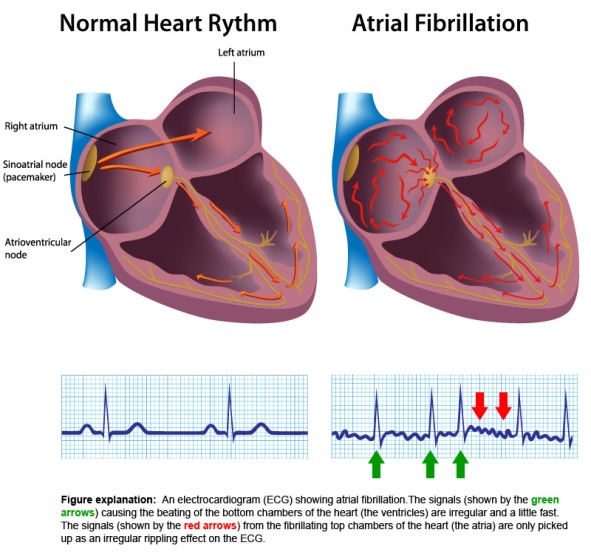

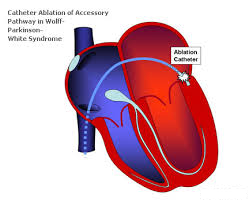
Aiding Accuracy in Coronary Interventions
At MIOT, our specialists perform special procedures which make sure that diagnosis and treatment of heart attacks is accurate. This ensures long term results for patients and eliminates the need for repeat stenting.
Fractional Flow Reserve (FFR) is a factual assessment procedure that gives the specialists the exact blood flow & pressure in the coronary artery as against the 2D images of the angiogram. This gives him the precise extent of the block and helps to choose the best course of treatment thereby improving long term outcomes.
Optical Coherence Tomography (OCT) gives specialists the view from the inside of the affected arteries with high resolution images. This is especially important during stenting to determine size and fit for better results. It also ensures correct placement of the stent during the procedure.
Get a status Update on your Heart
Heart Disease has many faces
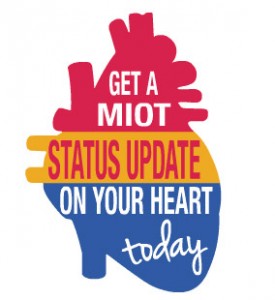 The heart pumps 7200 litres of life-sustaining blood everyday – an amazing collaboration of muscles, valves, chambers, electrical circuits and blood vessels (arteries and veins). For most people, awareness of heart disease is limited to heart attack. However, heart disease can occur in every part of the heart: the blood vessels, valves, electrical system and heart muscle itself. It can take a toll on your entire system, impacting your quality of life. What most of us are not aware is that most heart diseases can be corrected at an early stage or prevented – with the help of an experienced Interventional Cardiologist, thus preventing heart disease from limiting what you can do in life.
The heart pumps 7200 litres of life-sustaining blood everyday – an amazing collaboration of muscles, valves, chambers, electrical circuits and blood vessels (arteries and veins). For most people, awareness of heart disease is limited to heart attack. However, heart disease can occur in every part of the heart: the blood vessels, valves, electrical system and heart muscle itself. It can take a toll on your entire system, impacting your quality of life. What most of us are not aware is that most heart diseases can be corrected at an early stage or prevented – with the help of an experienced Interventional Cardiologist, thus preventing heart disease from limiting what you can do in life.
Chest pain is not always a heart attack. And a heart attack does not always start with chest pain.
What most of us don’t realise is that Heart disease can affect any part of the heart – muscles, valves, electrical systems or blood vessels. They throw up signals that we don’t recognize and hence remain untreated causing permanent damage which then affects day-to-day life. But why wait for something to happen? The good news is that all heart disease builds up over time – which means you can prevent or stop it at an early stage. This can be done with advanced Interventional Cardiology, provided the procedures are done by trained specialists with the right facilities.
Get a Status Update on Your Heart
Heart disease does not happen overnight – it develops over time. The changes that it makes in any part of your heart can be detected well before it strikes. Which means that you can stop its progression with early action rather than reacting when something goes wrong. Indians are genetically pre-disposed to heart disease – for example, our risk of heart attacks is 3-4 times greater than other nationalities. Therefore, preventive care is especially important for us.
At the MIOT Centre for Interventional Cardiology, our specialists use state-of-the-art interventional devices and techniques to help you keep tabs on your heart health, with minimal discomfort or loss of time. Thereby allowing you to take swift and effective action to stop heart disease before it can cause lasting damage.
Meet our team of Interventional Cardiologists, who specialise in every area of the heart. They will review your risk factors & test results, give you a complete and accurate assessment of your heart, and set you on the path to heart health. Don’t miss your chance to control heart disease before it controls you!
For any other queries please contact Tel: +91 044 4200 2288 Extn: 60128 email: inv_cardiology@miotinternational.com
Treatments & Procedures
Coronary Disease
- Primary Angioplasty
- Elective Aangioplasty
- Complex Angioplasties like:
- Rotablation Angioplasty
- By- pass Graft Angioplasty
- Left Main Angioplasty
- Multi-vessel Angioplasty
- Chronic Total Occlusion ( CTO ) Angioplasty (Antegrade or Retrograde)
- Special Imaging Guided Angioplasty with:
- Optical Coherence Tomography (OCT)
- Fractional Flow Reserve-Assessment (FFR)
Structural Heart Disease
- TAVI – Transcatheter Aortic Valve Implantation
- Percutaneous Valve In Valve Implantation
- Left Atrial Appendage Closure
- Mitra-Clip
- PTMC | BMV (Percutaneous trans – mitral commissurotomy)
- BAV – Balloon Aortic Valvuloplasty
- BPV – Balloon Pulmonary Valvuloplasty
- Alcohol Septal Ablation
- Atrial Septal & PFO Device Closure
Arrythmia
- CRT – Cardiac Resynchronization Therapy
- ICD – Implantable Cardioverter Defibrillator
- Permanent Pacemaker Implantation (PPI)
- Dual Chamber
- Single Chamber (Including MRI Compatible)
- Electro physiologic Studies & Radio Frequency Ablation (EPS + RFA)
Heart Failure & Cardiac Transplantation
- CRT – Cardiac Resynchronisation Therapy
- LVAD – Left Ventricular Assist Device
- Endomyocardiac Biopsy
- Right Heart catheter studies




